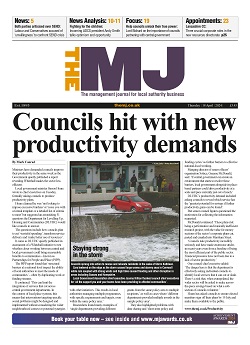As CEO of the UK’s largest operator of municipal leisure facilities, the recent findings from the District Council Network’s (DCN) survey suggesting a third of public leisure facilities could close due to the impact of the pandemic, came as no surprise.
It’s a spectre that has been hanging over the industry for many months and despite financial support from central Government through the furlough scheme, the National Leisure Recovery Fund and grants linked to the rateable value of buildings, the future of public sector leisure provision has never seemed so precarious.
National lockdowns, regional lockdowns and the tier system have left our facilities closed for months, with no ability to generate revenue, while we have still had to pay out for ongoing fixed costs. Our local authority partners have been supportive offering a combination of loans, grants and advance payments. But loans need repaying. We’ve had to resort to our reserves and take out Government-backed loans to underpin our stable operating position.
One of our greatest challenges has been the glacial speed with which support packages have been delivered. While it was envisaged that they would be paid ‘upfront’ to help with cash flow issues, in practice they have been paid months in arrears. In fact, we are still waiting for approximately 50 per cent of the funding allocated to us by the National Leisure Recovery Fund – payments that were originally due in December 2020. There really is no excuse for councils hanging on to these monies, which have been directly allocated to be passed on to their operating partners. This can only make the financial position of the operator worse and to what end?
We anticipate it will take between 12-18 months before we are back to operating at pre-COVID levels and it is this transitional period, where we are operating with ‘one hand tied behind our back’ that requires additional support. The increasing uncertainty around 21 June, coupled with the removal of furlough, is likely to create further financial challenges for the industry. That is why we urgently need central Government to sign off a National Leisure Recovery Fund #2.
As a charitable, social enterprise we know that it is the facilities in the most deprived areas and in rural locations that are most at risk of closure, as they were already operating on the tightest of margins. The irony being they are often the facilities that play the most crucial role at the heart of local communities.
One of the greatest frustrations is what appears to be a clear disconnect between central Government’s public commitments to tackling the nation’s health and its approach to public sector leisure provision.
The recent Queen’s Speech referenced £100m towards a Healthy Weight Strategy, in addition to a new Fit Miles initiative to fund and reward healthy behaviours and a greater emphasis on GP referrals and social prescribing. Public leisure facilities, accessible to all, should be at the heart of delivering all these initiatives. For hard to reach and disenfranchised groups, their local leisure centre is often the only place they have to exercise in a safe and secure environment. If these facilities close, where do they go?
The long term impact of facility closures will as sure as ‘night follows day’, be reflected in greater NHS and social care costs due to conditions including obesity, diabetes, heart conditions and mental health issues. In fact, new data released by the NHS this week shows hospital admissions for obesity related conditions up 17% in the past year.
As leisure operators we need to take the initiative too and explore more collaborative and innovative ways in which we can partner with the new Office for Health Promotion. At GLL we are already looking at how we can ensure that health is at the core of leisure service delivery. We are developing new programmes including a discounted ‘Give it a Go’ taster package, designed to offer the physically inactive, personal support and the chance to try a host of different activities.
In fact, the benefits of positive leisure provision are more than just an abstract concept. Sheffield Hallam University and 4Global’s Social Value Calculator makes it possible to track quantifiable social change by measuring key indicators such as Improved Health, Wellbeing, Educational Attainment and Reduced Crime. During 2020, despite the challenges of the pandemic, for every £1 GLL returned around £2 of social value.
Community leisure is about much more than just Fitness. We serve the whole community, able bodied and disabled, young and old, indoor and outdoor, across every sport and physical activity. We have the ability to institute real social change and improve the physical, mental and social health of the nation. There are few things that are more worthy of investment.
Mark Sesnan is CEO of social enterprise and leisure operator GLL.



